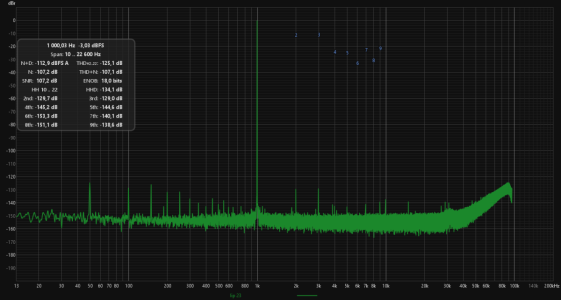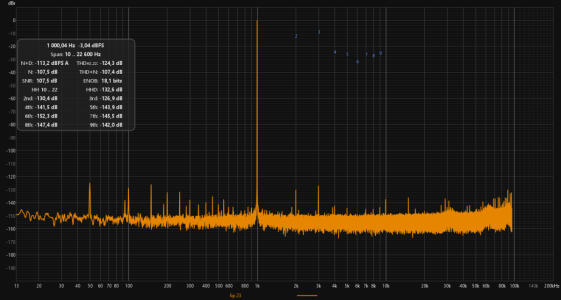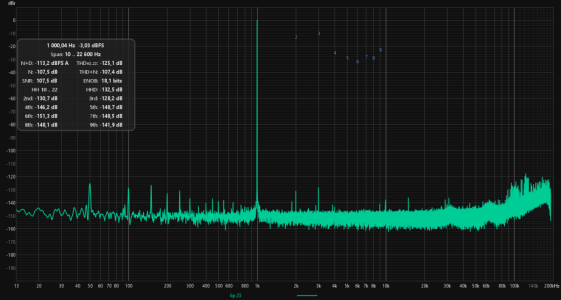As far as I understand it, this specific measurement is done into the WiiM Ultra optical input, and measured at the analog/line output.
Two different sample rate are sent to the optical input:
a) first test with 48kHz sample rate (meaning usable audio signal is 0-24kHz; everything else is out-of-band), and
b) second test with 96kHz sample rate input signal (meaning usable audio signal is 0-48kHz; everything else is out-of-band).
But in both cases the
measurement bandwidth at the Audio Precision analog input was 90kHz (which means that AP ADC uses some sample rate higher than 180kHz for this test). As such, this is a
wideband measurement especially designed to capture any artifacts that are
out of the operating range of the DAC.
The fact that the Ultra toslink 48kHz test shows higher (and relatively constant) THD-N level indicates that there is some kind of noise or spurious tones in this measurement, most likely between 24kHz and 90kHz (i.e. out of the audible band), when using this sample rate. As already mentioned, usually a wideband measurement that looks like this is indicative of noise shaping, which is a very common practice in DAC design to increase SNR in the DAC operating range by pushing its noise out of the usable (and audible) band.
EDIT: Just checked the ASR review and Amir actually explicitly shows this noise shaping in a separate measurement - look at the noise increase above 30kHz:
Here's one example from a different DAC review illustrating this, as well as how just decreasing the AP measurement bandwidth in the same test from 90kHz to 45kHz (for the same 48kHz sample rate) can decrease the measured wideband THD-N level:
I.e., IMHO this kind of measurement result should not be a problem in itself - it just indicates what kind of DAC implementation is used in WiiM Ultra. Some DACs do better in this test because they manage low noise in their operating range without noise-shaping - that's great from a technical perspective, but I doubt it has much audible benefit.
Note also that if you increased the
measurement bandwidth at the Audio Precision to a higher frequency (e.g. 200kHz) many other DACs that measure 'well' with 90kHz measurement bandwidth might potentially measure significantly worse. Likewise, if you decrease it to 25kHz most would measure better. It just depends what it is you want to measure, and 90kHz is a bit of a random figure to use - I don't see any reason why it would be especially relevant from psychoacoustics standpoint.
So in summary I don't really see this measurement to be indicative of any real problem or bug in the WiiM Ultra; IMHO you can use any sample rate without any fear of degradation in sound quality.
Just my 2 cents!







